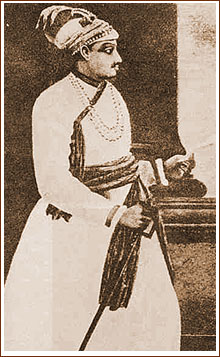 Siraj-ud-daulah was to acquire much notoriety both among the British and the Indians. He was to succeed as the Nawab of Bengal in April 1756 at the age of 27. “Siraj-ud-daula has been pictured”, says the biographer of his vanquisher, Lord Clive, “as a monster of vice, cruelty and depravity. But though he may have suffered from the demoralizing effects of too much wealth and power at too early an age, he was in fact no more cruel than most eighteenth-century Eastern despots.
Siraj-ud-daulah was to acquire much notoriety both among the British and the Indians. He was to succeed as the Nawab of Bengal in April 1756 at the age of 27. “Siraj-ud-daula has been pictured”, says the biographer of his vanquisher, Lord Clive, “as a monster of vice, cruelty and depravity. But though he may have suffered from the demoralizing effects of too much wealth and power at too early an age, he was in fact no more cruel than most eighteenth-century Eastern despots.
His main fault was weakness, which caused him to be fickle and indecisive; he was also arrogant, of changeable temper, and lacking in courage” (Mark Bence-Jones, Clive of India [London: Constable, 1974], p. 89). There are few contemporary Bengali accounts of the Nawab; and almost all the principal sources for his life are the writings of such Englishmen as were responsible for his overthrow.
A few months after succeeding to the throne of the Nawab, Siraj-ud- daulah launched an attack upon Calcutta. He had demanded, as was his right, that British fortifications at Calcutta, designed to be used against him, be destroyed, and when his demand was not complied with he captured the city. The Nawab was then to be falsely implicated in the infamous episode of the “Black Hole” of Calcutta, in which 146 English prisoners are said to have suffocated to death by being confined to a small and airless prison.
The Nawab, in the event, had an unhappy ending. In early 1757, Clive recaptured Calcutta, and a few months later the encounter between Clive and Siraj-ud-daulah moved to a decisive close. Betrayed by his own granduncle, Mir Jafar, and deserted by his army, Siraj-ud-daulah lost the skirmish at Plassey on 23 June 1757 which has been dignified by historians with the epithet “battle”. The forces of the East India Company under Clive triumphed, and the administration of Bengal fell into the hands of the Company. The Nawab’s body was found in the river a few days later.

